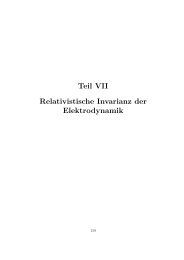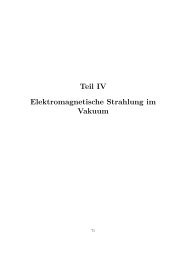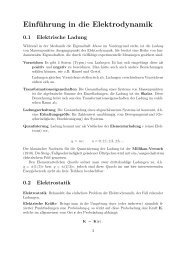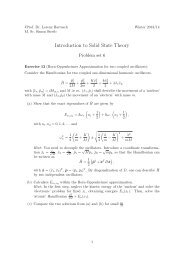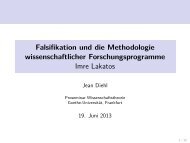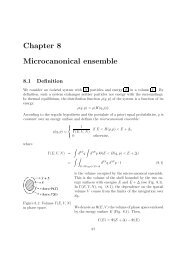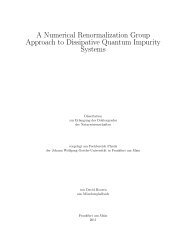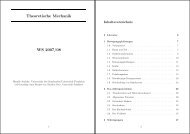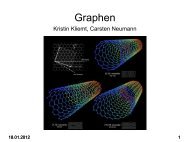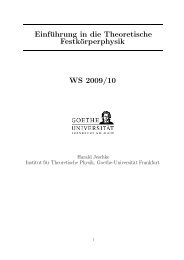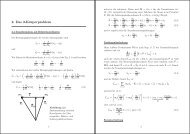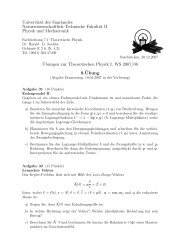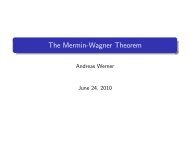Microscopic Modelling of Correlated Low-dimensional Systems
Microscopic Modelling of Correlated Low-dimensional Systems
Microscopic Modelling of Correlated Low-dimensional Systems
Create successful ePaper yourself
Turn your PDF publications into a flip-book with our unique Google optimized e-Paper software.
Chapter 1<br />
Introduction<br />
<strong>Low</strong> <strong>dimensional</strong> quantum spin systems containing transition metal ions have been a sub-<br />
ject <strong>of</strong> intensive research in the last few decades in solid state theory as they allow a direct<br />
comparison <strong>of</strong> experimental observations with theoretical predictions. Their many lattice<br />
and electronic (orbital, charge and spin) degrees <strong>of</strong> freedom are coupled by effective interac-<br />
tions such as hopping, Coulomb repulsion and Hund’s rule coupling. When some <strong>of</strong> these<br />
interactions are <strong>of</strong> similar magnitude, competing phases may exist. <strong>Low</strong> <strong>dimensional</strong> spin<br />
systems refer to those materials where the magnetic interaction between the magnetic ions<br />
extend to less than three dimensions. Such arrangement resemble sheets (two <strong>dimensional</strong>),<br />
chains (one <strong>dimensional</strong>) or clusters (zero <strong>dimensional</strong>) with their short dimensions on the<br />
scale <strong>of</strong> atoms. As one or more dimensions are restricted, confinement effects play an impor-<br />
tant role, giving rise to a variety <strong>of</strong> extremely interesting and unusual quantum-mechanical<br />
phenomena. The theoretical study <strong>of</strong> such phenomena has been however hindered by the<br />
large characteristic energy scales found in many materials. For instance, inorganic cuprates<br />
have exchange constants <strong>of</strong> the order <strong>of</strong> J ∼ 1500 K [60]. In order to study magnetic-field<br />
induced transitions, the applied magnetic field has to overcome the saturation field which<br />
for these materials is on the order <strong>of</strong> 3800 T. Experimentally it is possible to reduce the<br />
energy scales in model materials by introducing defects, substituting components or doping<br />
with non-magnetic ions (dilution). The recent discovery <strong>of</strong> low <strong>dimensional</strong> metal-organic<br />
compounds and dilute compounds with metal-metal exchange couplings on the order <strong>of</strong><br />
few meV have brought renewed focus, both by experimentalists and theoreticians, to these<br />
materials [98], [119].<br />
Metal-organic compounds formed by transition metal centers bridged with organic ligands<br />
1



